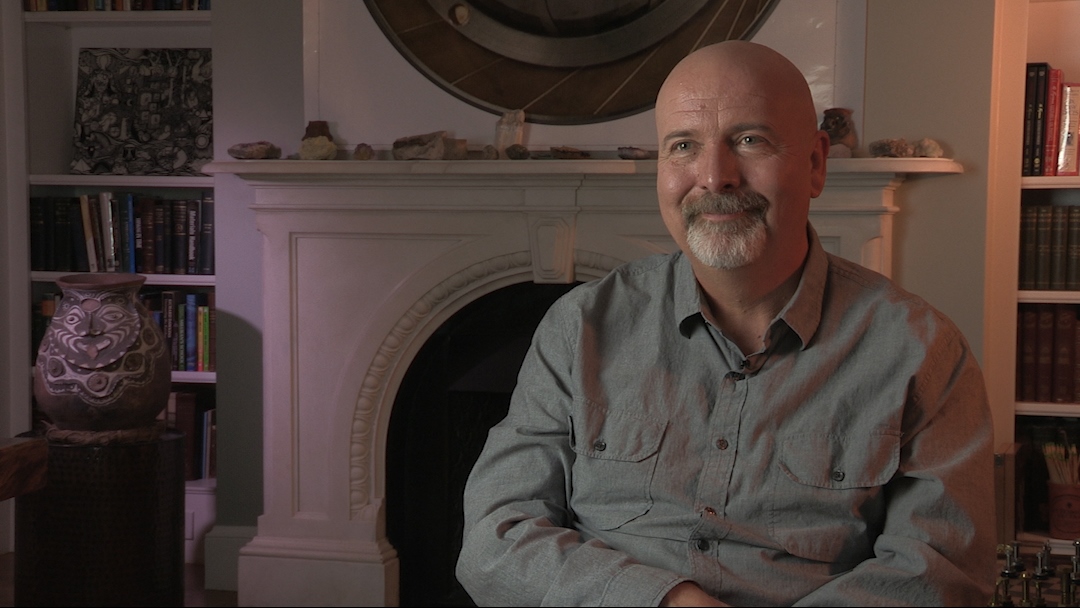NEXT STORY

Evolving an intelligence with the use of computers
RELATED STORIES

NEXT STORY

Evolving an intelligence with the use of computers
RELATED STORIES


|
Views | Duration | |
|---|---|---|---|
| 181. AI and why I built the Connection Machine | 100 | 03:24 | |
| 182. The complexity of human intelligence | 103 | 05:03 | |
| 183. Recreating evolution inside a computer | 1 | 80 | 03:38 |
| 184. Nature – the great engineer | 1 | 91 | 02:44 |
| 185. Morphogenesis as an adaptive process | 76 | 03:01 | |
| 186. The two-dimensional landscape of evolution | 75 | 03:51 | |
| 187. Evolving an intelligence with the use of computers | 70 | 00:59 | |
| 188. Programming an intelligence for solving complex problems | 68 | 03:36 | |
| 189. How to create an intelligence | 69 | 05:11 | |
| 190. My interest in proteomics | 83 | 02:50 |


There's a way of thinking about evolution that evolution... you can imagine evolution as exploring a landscape of fitness. So imagine a two-dimensional landscape with hills and towers and holes and imagine that you're trying to explore around, trying to find the highest place. Well, a good algorithm would be to just always try to step uphill. And so if you think of the genes as defining that space, and the process of natural selection as a process by which you kind of always walk uphill. But the problem with that is you get stuck on a little hill, a local maximum, and so there might be a giant mountain over here, but you're stuck on this little hill and you can't get to this mountain without walking downhill for a while. So the best explanation that people have for genetics is well, there's a certain amount of randomness, and you wander over to that hill. Or they might have the landscape is such that there's a magically a ridge that always goes uphill from a bacterium to a human, like I said before. But I think both of those are unlikely explanations.
I think the more likely explanation is that if you take that genetic landscape, there's an adaptive process that takes that messy landscape and adapts it to a process that is more like a single hill. It's sort of more sensible. It doesn't have these local... these local maxima. And so it's an easier hill to do hill-climbing in. And so... and then learning takes that next space and it adapts it again to an even easier. So by the end of it, you actually have a pretty simple space that has a single hill so that evolution can actually just walk uphill to the answer or to a complex. To an answer. And so that's one of the things that I think is missing in the way we model evolution. I think another thing that we're missing is of course you're not just evolving one species at once. You're evolving a whole ecosystem of different species and one very important thing is you're evolving things that are adversarial to you. So you're evolving against parasites and you're evolving against predators and so that means that your hill is influenced by the hill of something else. And that process causes the landscape to constantly move around in a way that gets you off a local maximum. So I've also modelled that on a computer. So those sorting programs that I said, they got pretty good if I just used evolution to climb up the hill, but they got much better if I co-evolved programs that are sequences to be sorted, that tried to find bugs in the sorting programs. And so I evolved sorting program test cases at the same time I co-evolved sorting programs. And so if a sorting program was pretty good but not perfect, in other words, it had gotten up to the top of a small hill, then the test cases would evolve to exploit its imperfection and basically shrink that hill, collapse it, so that it would have to move to the next hill. And so that landscape that I described is actually very dynamic and determined by the co-evolution of everything else. So there's another important effect that's almost never modelled in simulated evolution.
W Daniel Hillis (b. 1956) is an American inventor, scientist, author and engineer. While doing his doctoral work at MIT under artificial intelligence pioneer, Marvin Minsky, he invented the concept of parallel computers, that is now the basis for most supercomputers. He also co-founded the famous parallel computing company, Thinking Machines, in 1983 which marked a new era in computing. In 1996, Hillis left MIT for California, where he spent time leading Disney’s Imagineers. He developed new technologies and business strategies for Disney's theme parks, television, motion pictures, Internet and consumer product businesses. More recently, Hillis co-founded an engineering and design company, Applied Minds, and several start-ups, among them Applied Proteomics in San Diego, MetaWeb Technologies (acquired by Google) in San Francisco, and his current passion, Applied Invention in Cambridge, MA, which 'partners with clients to create innovative products and services'. He holds over 100 US patents, covering parallel computers, disk arrays, forgery prevention methods, and various electronic and mechanical devices (including a 10,000-year mechanical clock), and has recently moved into working on problems in medicine. In recognition of his work Hillis has won many awards, including the Dan David Prize.
Title: The two-dimensional landscape of evolution
Listeners: George Dyson Christopher Sykes
Christopher Sykes is an independent documentary producer who has made a number of films about science and scientists for BBC TV, Channel Four, and PBS.
Tags: evolution, landscape, co-evolution, species, computer programming
Duration: 3 minutes, 51 seconds
Date story recorded: October 2016
Date story went live: 05 July 2017